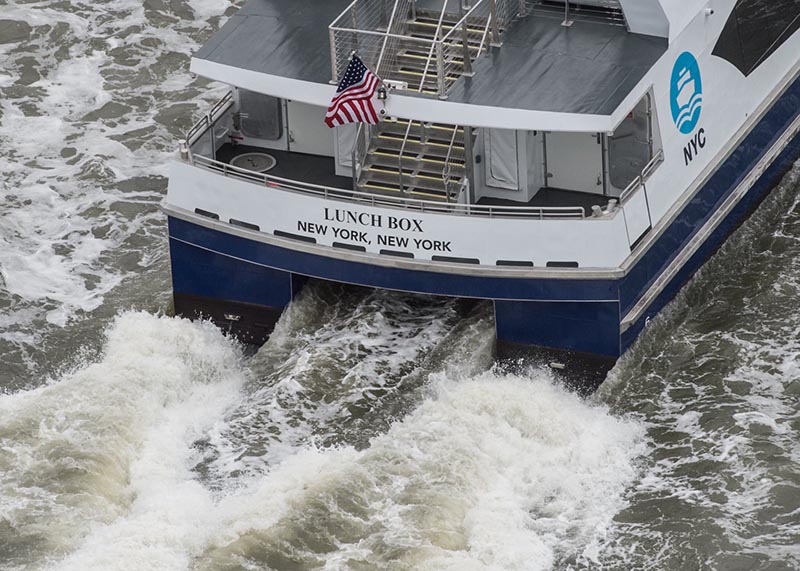With two new routes and the summer 2018 season approaching, NYC Ferry is hiring for more than 75 new jobs, including captains, deckhands, customer service agents, ticketing, operations and other positions, according to the New York City Economic Development Corporation and ferry operator Hornblower.
The almost year-old public ferry system has exceeded ridership projections by 34% or 800,000 patrons, a driving factor for increasing the fleet’s workforce to 325 by this summer, according to Hornblower.
Another driver is the impending start of the Lower East Side and Soundview routes, anticipated to add another 1.4 million riders to the interborough service. Construction is underway on new landings.
The Lower East Side route will carry a projected one million riders annually between Manhattan’s Wall Street/Pier 11, Corlears Hook, Stuyvesant Cove, East 34th Street; and Long Island City in Queens. The Soundview route will carry 400,000 a year between the Soundview area of the Bronx, and Manhattan at East 90th Street, East 34th Street and Wall Street/Pier 11.
Initial projections had NYC Ferry carrying more than 4.6 million trips per year on 23 vessels across six routes. Mayor Bill de Blasio touted the system — with tickets at $2.75, the same as a subway fare — as providing a new and faster transit option to Manhattan from underserved borough neighborhoods.
The popular response proved to be far more than planners anticipated, and the system’s first months in spring and summer 2017 had some rocky timers, with riders complaining of long lines and delays.
Hornblower upped its order for more Incat Crowther-designed aluminum catamarans from Metal Shark in Franklin, La., increasing capacity from the original 149 passengers to 349 riders. Those vessels are entering service for 2018.
City officials and Hornblower promote the ferry as a job creator, not only for riders but for the maritime workforce. More than 10% of crewmembers have been promoted to career level positions within their first year of work, including more than 10 deckhands who built experience, training and Coast Guard certification for captain’s licenses, according to Hornblower.
“NYC Ferry is not only connecting the over three million riders to growing job centers, technology hubs, public institutions and housing developments across the waterfront, but we’re striving to create a culture of opportunity and advancement for all of our crew on our team that we bring on board,” said Cameron Clark, senior vice president with Hornblower, in announcing the new hiring plan. “We’re excited to welcome a new wave of talent into the NYC Ferry family.”
Along with its internal programming tom facilitate career advancement, Hornblower has developed advanced real-time simulator training through its existing partnership with the State University of New York Maritime College to include a stronger focus on weather and route conditions. Simulator training at SUNY’s Bouchard simulator center in Throggs Neck, N.Y., is mandatory for current and future ferry captains, including annual refresher courses.
The training program has also added additional exercises and procedures to enhance crew performance, including future route familiarization and testing of key navigational aids and charts to reinforce route awareness, according to Hornblower.





